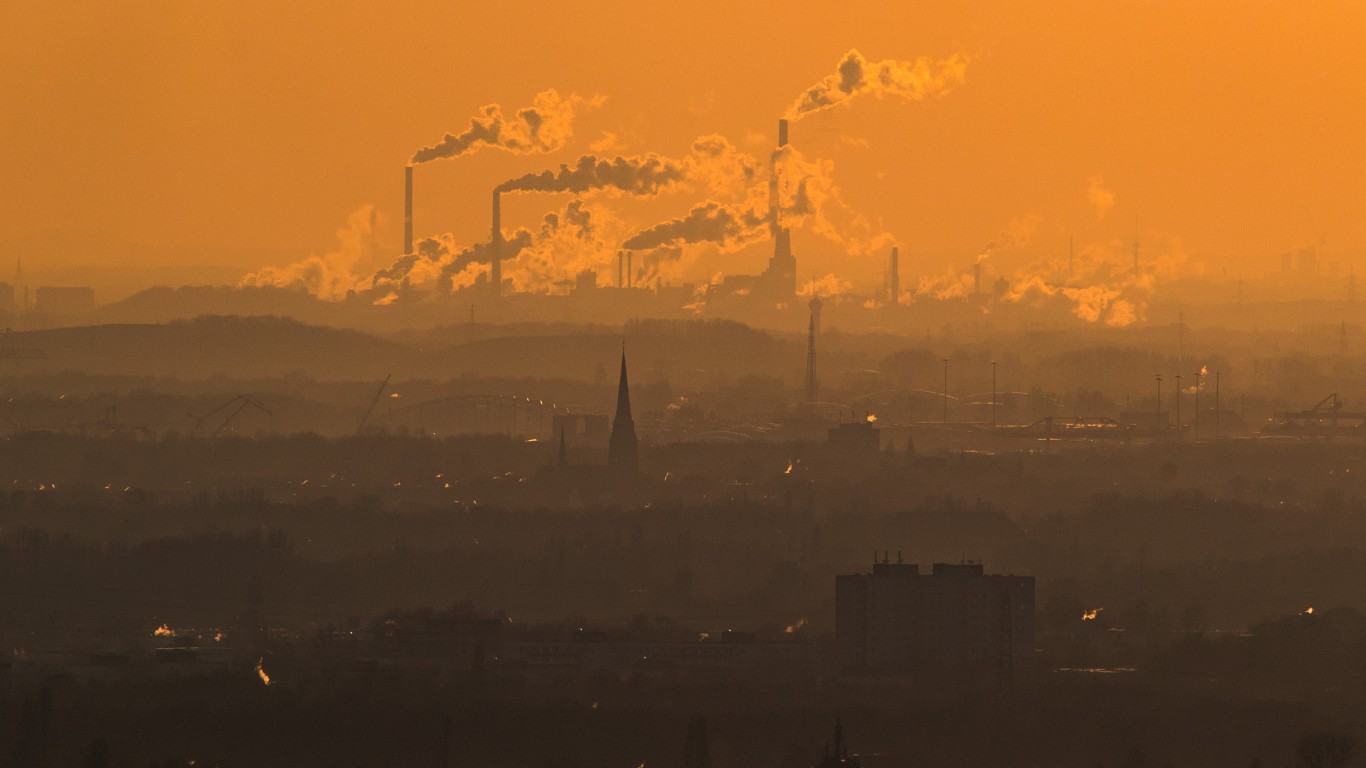
In the worldwide effort to curb climate change, 2021 was an important year. In August, the U.N.’s Intergovernmental Panel on Climate Change issued its sixth report, with its most urgent plea to date for quick action to reduce greenhouse gas (GHG) emissions. Three months later, 197 nations came together in Glasgow for a two-week conference, known as COP26, to attempt to arrive at an agreement on the measures needed to to avoid the calamity predicted by the IPCC if the world is unable to limit warming to 1.5ºC.
The conference failed to meet the hopes and expectations of its conveners, garnering insufficient commitment to a 2050 target for net zero GHG emissions. Even for the scores of countries willing to make that commitment, most have not been able to meet previous emission reduction goals and do not have detailed, concrete plans and strategies in place to make up for lost time. (These are the 40 countries decreasing emissions the fastest.)
COP26 did accomplish some important things, however. Leading up to the summit, leaders across the globe focused more on climate change, initiating new programs, committing more funds, setting tighter goals, and exploring alternative paths to the 2050 target. Even vocal climate skeptics, such as Brazil’s Jair Bolsonaro acknowledged the urgency posed by rising temperatures.
At the conference itself, there was agreement among 100 nations to a methane reduction goal. In addition, 120 nations, representing 90% of the world’s forests, set 2030 as a target for ending, and beginning to reverse, deforestation. And the world’s two largest emitters of greenhouse gasses, the United States and a previously recalcitrant China, agreed to cooperate in efforts to curb climate change. Delegates also agreed on the need to provide significant assistance to developing nations in meeting their emission reduction goals. (These are the 50 countries with the highest CO2 emissions per capita.)
Importantly, the gathered nations agreed to regroup to report on their progress in meeting the commitments they’ve made.
Some 20 countries are responsible for more than 75% of all GHG emissions. To determine what those countries are, 24/7 Wall St. reviewed data from the 2021 edition of the International Energy Agency report on GHG emissions from energy. Countries were ranked by total GHG emissions from energy in million metric tons of CO2 equivalent. There were 89 countries with available data.
Click here to see the 20 countries responsible for nearly all global emissions
Data on the percentage of each country’s 2020 CO2 emissions out of world GHG emissions came from The Global Carbon Budget published by Integrated Carbon Observation System, a community of more than 500 scientists. 2020 population data came from the World Bank.

20. Poland
> GHG emissions, 2019: 295.04 million metric tons of CO2 eq
> Pct. of world GHG emissions: 0.78%
> Pct. of CO2 emissions 2020: 0.86% — #19 of 145 countries
> Population, 2020: 37.95 million
> Pct. of world population: 0.49%
Struggling with its economy and Covid-19, Poland is the only country in the European Union that has not signed onto a pledge to reach net zero GHG emissions by 2050. Instead, it has set a shorter term goal of reducing emissions by 30% by 2030. Historically, Poland has relied on coal for energy, and with coal being a national resource, there is a reluctance to give up coal plants. Still, the country is moving on plans to invest in nuclear energy and wind power in pursuit of its climate goals.
[in-text-ad]

19. Vietnam
> GHG emissions, 2019: 299.55 million metric tons of CO2 eq
> Pct. of world GHG emissions: 0.80%
> Pct. of CO2 emissions 2020: 0.73% — #25 of 145 countries
> Population, 2020: 97.34 million
> Pct. of world population: 1.25%
Along with dozens of countries around the world, Vietnam has pledged to reach carbon neutrality by 2050, with a 2030 goal of reducing coal dependence by doubling its renewable energy generation. Speaking last November at the U.N.’s climate conference in Glasgow, Vietnamese prime minister Pham Minh Chinh called on more developed nations to provide financial and technological assistance and the expertise needed for his country to meet its goals.
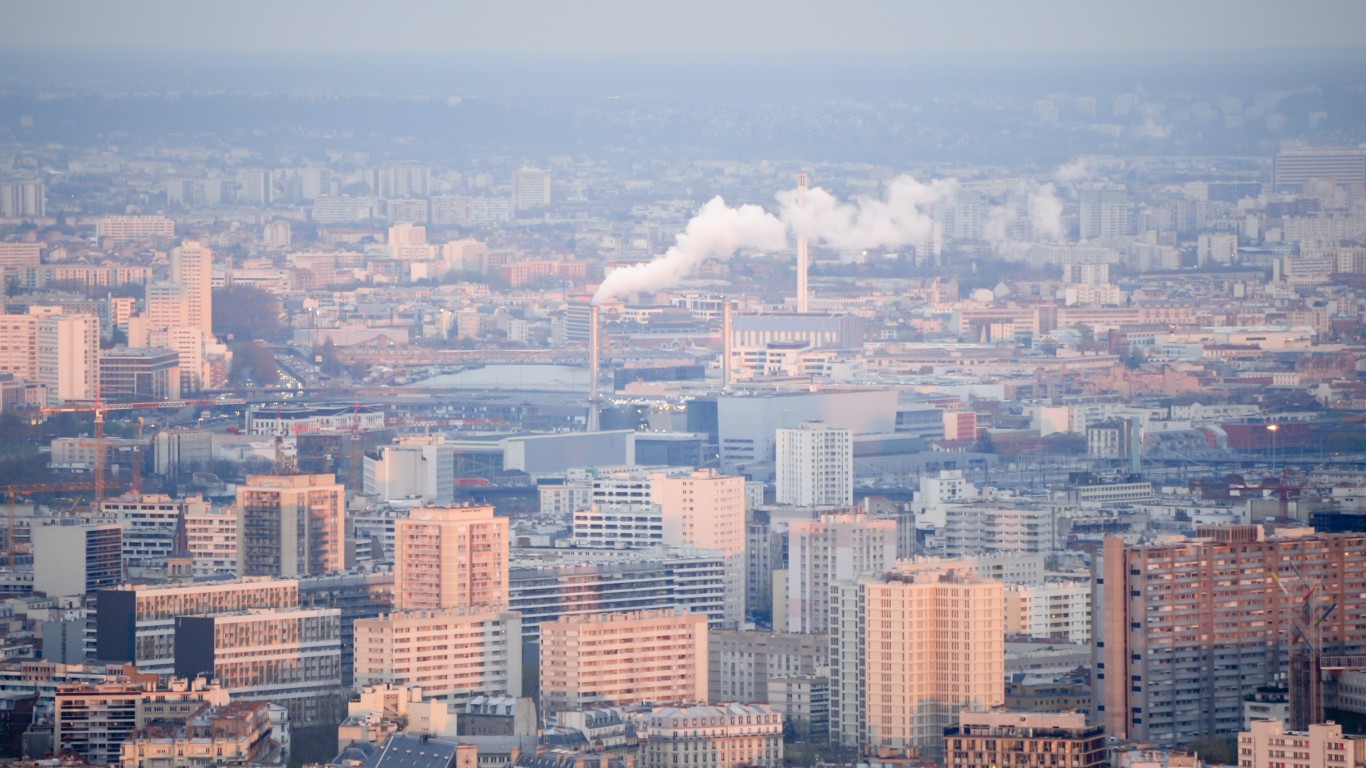
18. France
> GHG emissions, 2019: 302.61 million metric tons of CO2 eq
> Pct. of world GHG emissions: 0.80%
> Pct. of CO2 emissions 2020: 0.79% — #21 of 145 countries
> Population, 2020: 67.39 million
> Pct. of world population: 0.87%
In step with most of the rest of the European Union, France has signed onto a net zero emissions goal for 2050, and is increasing its efforts to shrink its carbon footprint. Like most of the world, however, it has failed miserably in meeting previous climate goals. France’s failure to meet its Paris accord commitments from 2015 inspired a lawsuit by four NGOs that resulted in a court order giving the French government until the end of 2022 to “repair the damage” for excess emissions between 2015 and 2018..
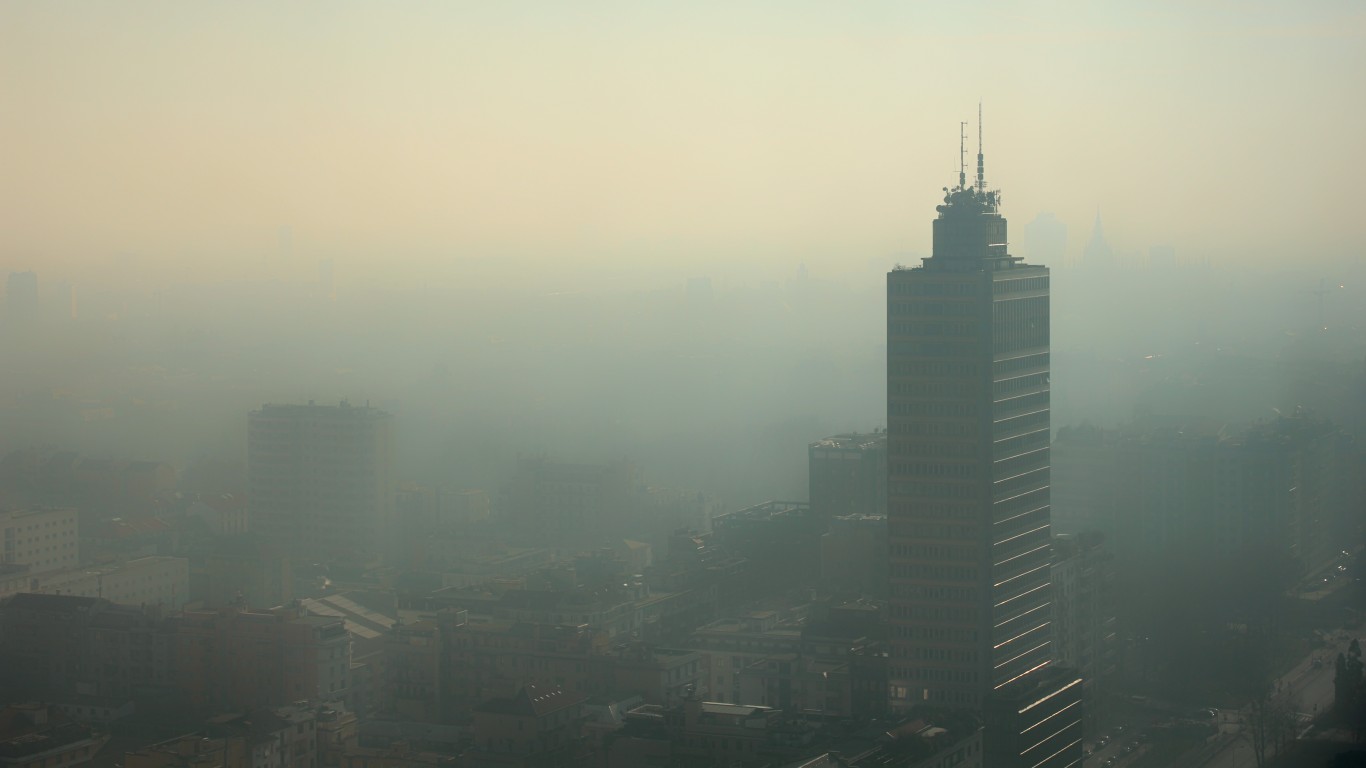
17. Italy
> GHG emissions, 2019: 319.96 million metric tons of CO2 eq
> Pct. of world GHG emissions: 0.85%
> Pct. of CO2 emissions 2020: 0.87% — #18 of 145 countries
> Population, 2020: 59.55 million
> Pct. of world population: 0.77%
Italy has beaten EU averages by lowering emissions in all sectors since 2005, the largest in energy (42%) and manufacturing and construction (47%). Coal replacement, significant progress in energy efficiency, and expansion of clean transportation programs are supplemented by policies that have increased Italy’s forest cover, which has grown to over 31% of the country’s surface area, functioning as a carbon sink.
[in-text-ad-2]
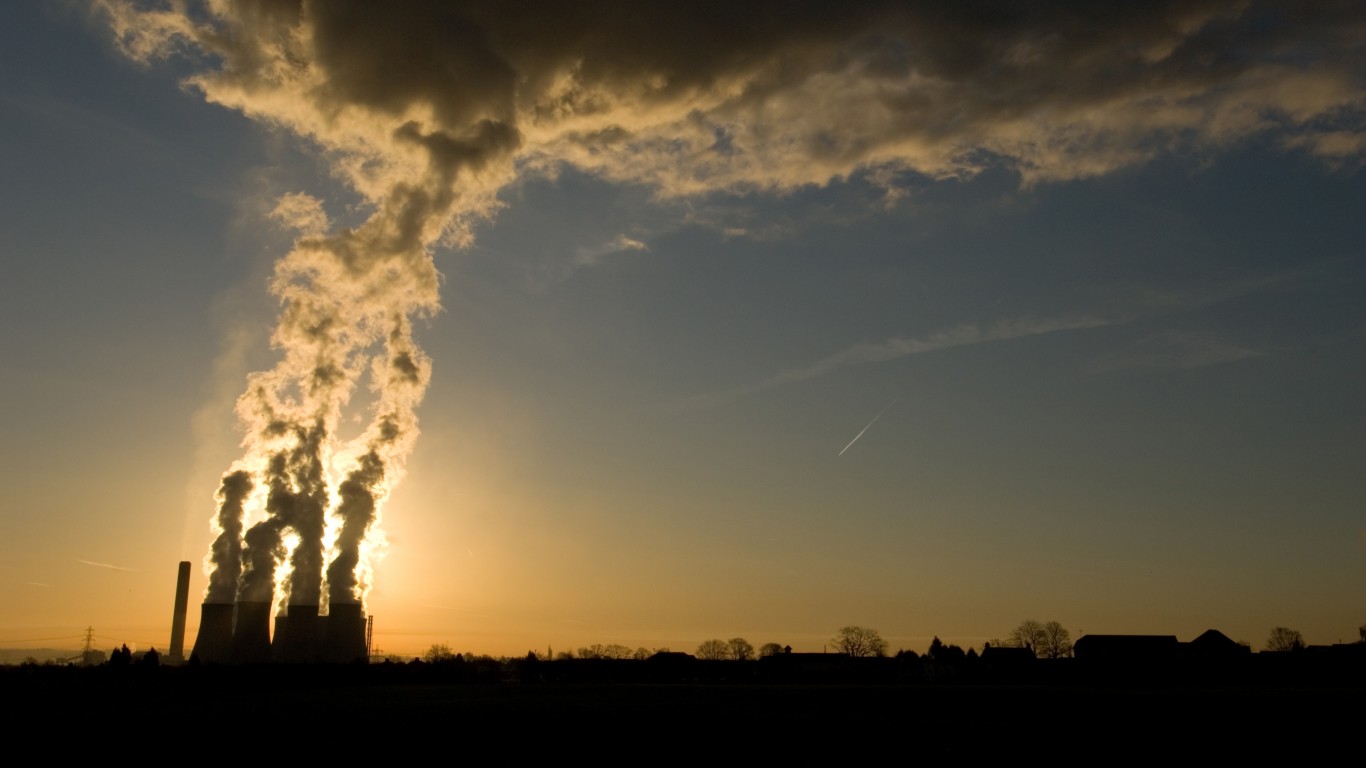
16. United Kingdom
> GHG emissions, 2019: 354.33 million metric tons of CO2 eq
> Pct. of world GHG emissions: 0.94%
> Pct. of CO2 emissions 2020: 0.95% — #17 of 145 countries
> Population, 2020: 67.22 million
> Pct. of world population: 0.87%
The UK has reduced its carbon emissions by an impressive 49% from 1990 levels, and, as was true elsewhere, this number was greatly enhanced by the pandemic, with emissions dropping by 11% in 2020 alone. Unfortunately, Covid-19’s gift to the climate is fast disappearing around the world as emissions bounce back to near pre-pandemic numbers.
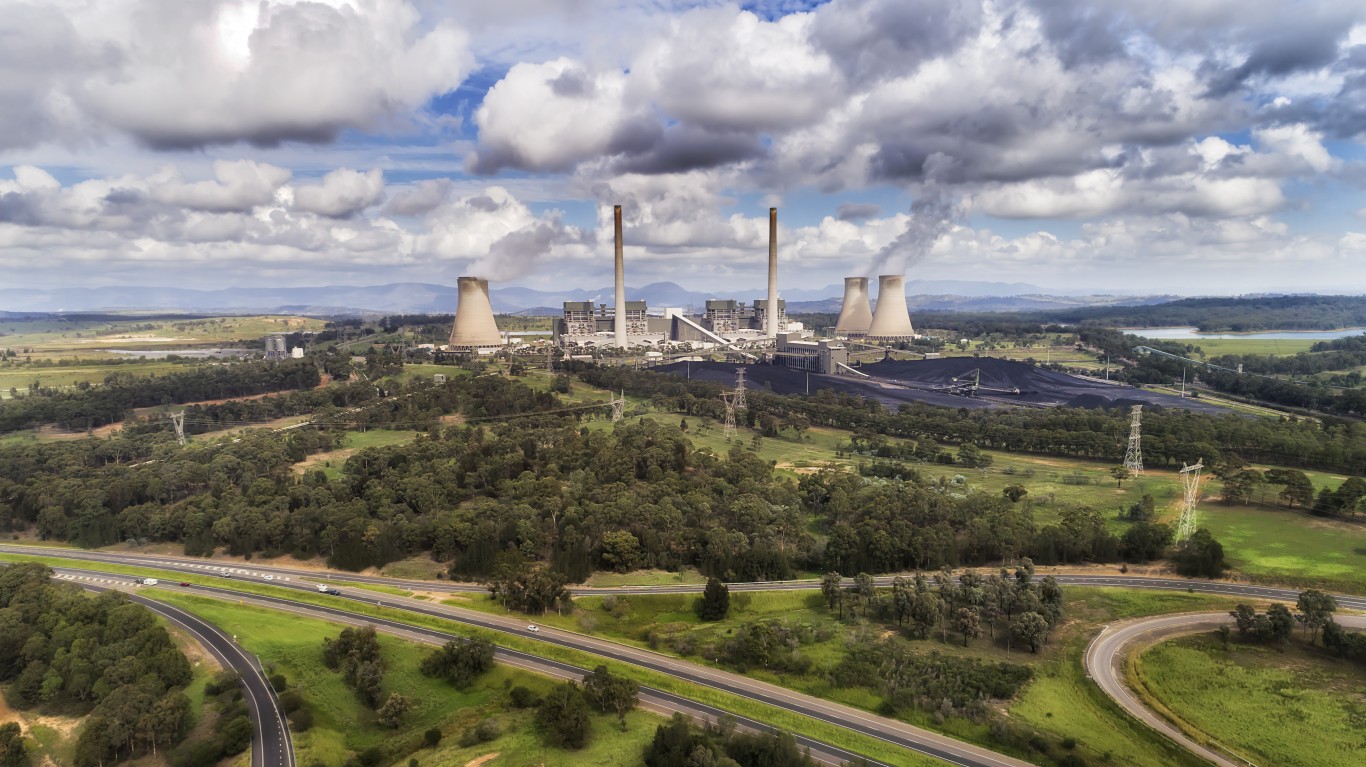
15. Australia
> GHG emissions, 2019: 430.11 million metric tons of CO2 eq
> Pct. of world GHG emissions: 1.14%
> Pct. of CO2 emissions 2020: 1.13% — #15 of 145 countries
> Population, 2020: 25.69 million
> Pct. of world population: 0.33%
Australia, a massive user and exporter of fossil fuels, has been heavily criticized for its approach to climate change. While joining many other countries in setting a 2050 net zero emissions goal, it is focusing on carbon capture and large investments in low emission technology rather than a reduction in fossil fuel emissions. Most agree this is not a winning strategy.
[in-text-ad]
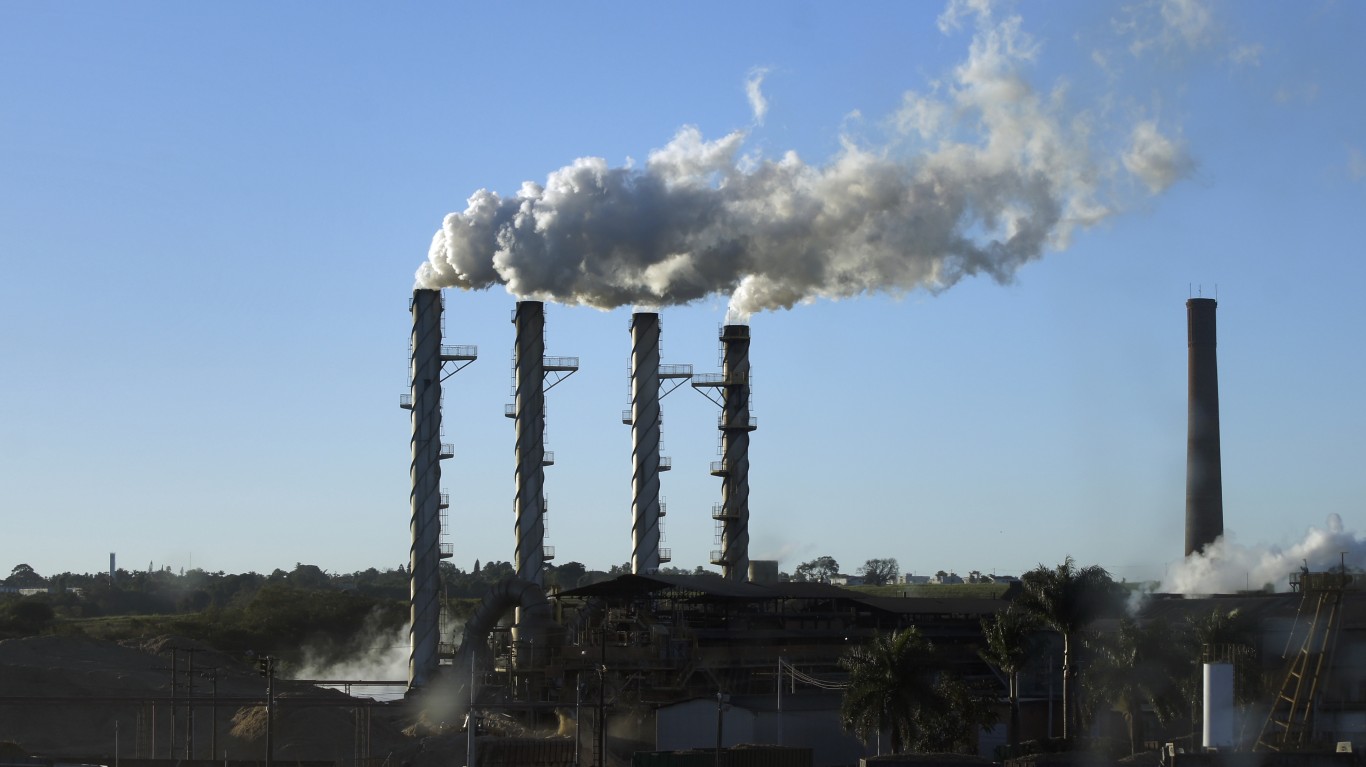
14. Brazil
> GHG emissions, 2019: 450.52 million metric tons of CO2 eq
> Pct. of world GHG emissions: 1.20%
> Pct. of CO2 emissions 2020: 1.34% — #12 of 145 countries
> Population, 2020: 212.60 million
> Pct. of world population: 2.74%
Facing a tidal wave of condemnation for its cavalier attitude toward climate change, Brazil arrived at November’s climate conference in Glasgow with a new sense of urgency. An apparently chastened President Bolsonaro committed to “acting responsibly” as he endorsed tough goals for reducing GHG emissions, and promised to slow the deforestation that has accelerated on his watch and outraged the world.
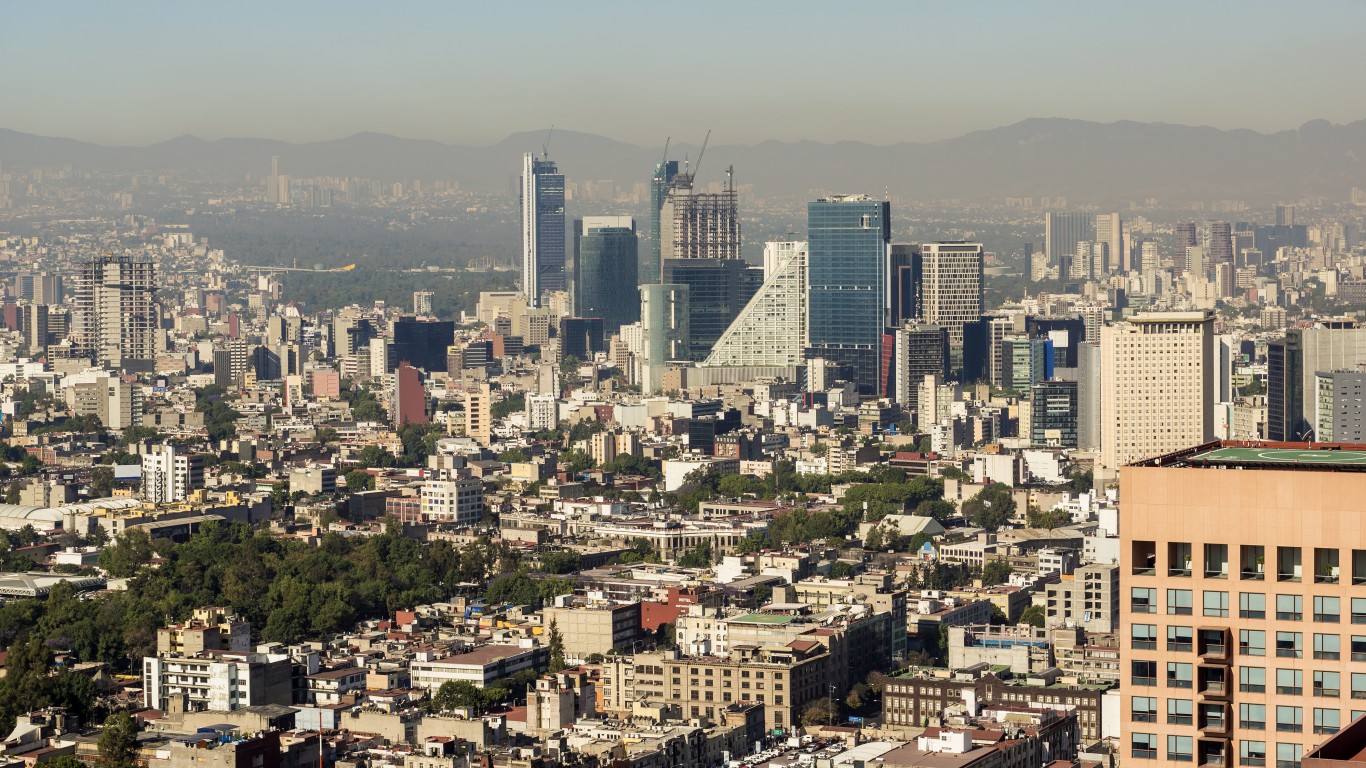
13. Mexico
> GHG emissions, 2019: 464.92 million metric tons of CO2 eq
> Pct. of world GHG emissions: 1.24%
> Pct. of CO2 emissions 2020: 1.03% — #16 of 145 countries
> Population, 2020: 128.93 million
> Pct. of world population: 1.66%
Mexico has sometimes been viewed as a climate leader among poorer nations, largely based on a history of rhetoric and lofty goals, yet that history has played out as one of backsliding and continued commitment to oil production. With 80% of Mexico’s population concerned about climate change in the face of stronger hurricanes and recurring drought and heat waves, some states and cities within Mexico are moving ahead with their own emission reduction plans without federal help.

12. South Africa
> GHG emissions, 2019: 477.10 million metric tons of CO2 eq
> Pct. of world GHG emissions: 1.27%
> Pct. of CO2 emissions 2020: 1.30% — #13 of 145 countries
> Population, 2020: 59.31 million
> Pct. of world population: 0.76%
Under pressure from investors and environmental groups, and in anticipation of the 2021 international climate summit, South Africa tightened its climate change goals. The lowered emission targets will require a shift away from coal, which currently powers the state-owned energy utility. South Africa’s leadership is seeking billions of dollars in aid to allow a transition to renewables.
[in-text-ad-2]

11. Saudi Arabia
> GHG emissions, 2019: 581.96 million metric tons of CO2 eq
> Pct. of world GHG emissions: 1.55%
> Pct. of CO2 emissions 2020: 1.80% — #8 of 145 countries
> Population, 2020: 34.81 million
> Pct. of world population: 0.45%
Saudi Arabia is the world’s largest oil exporter and is not about to divorce itself from its fossil fuel economy. Still, the country has pledged to a zero emission goal, which Crown Prince Mohammed bin Salman has set for 2060. Saudi Arabia will attempt to reach its target by shifting to renewables for domestic consumption, planting billions of trees, and employing technology to reduce emissions and remove carbon from the air.
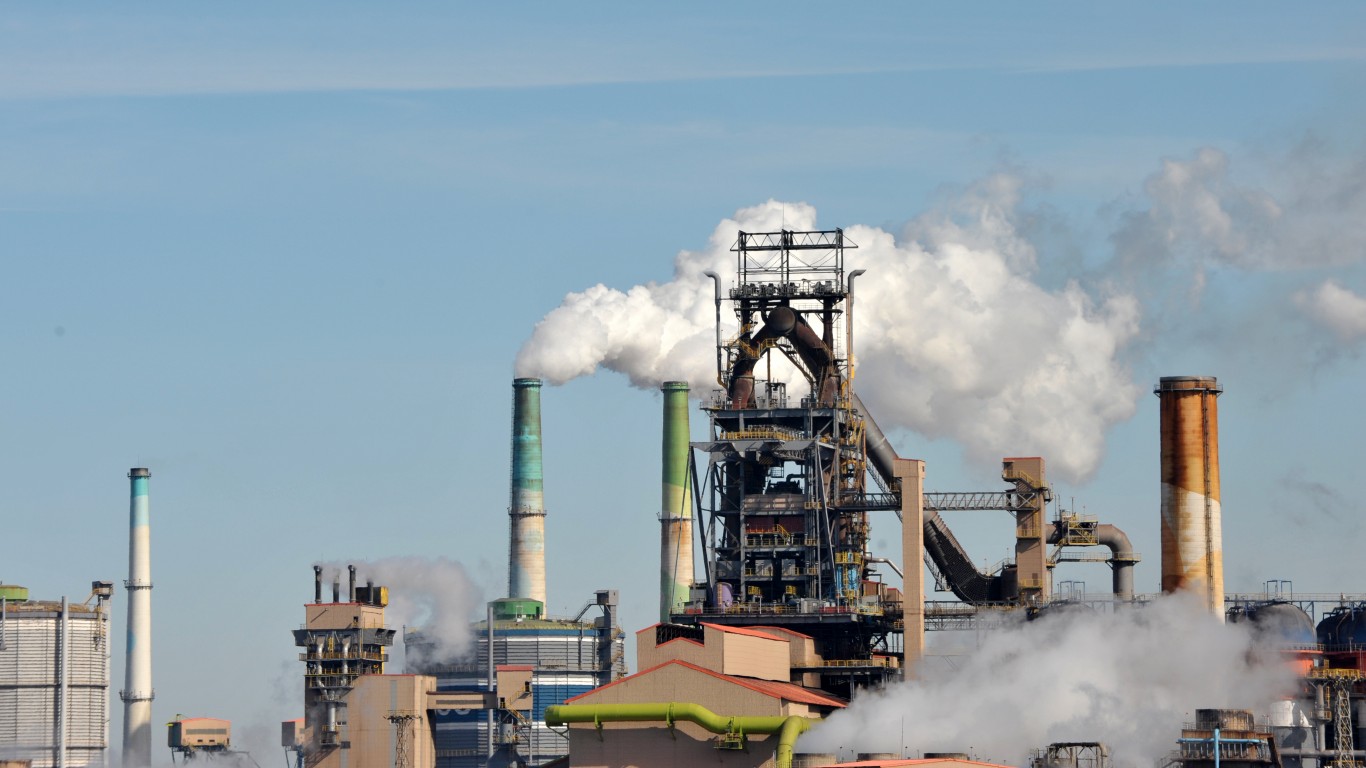
10. South Korea
> GHG emissions, 2019: 593.70 million metric tons of CO2 eq
> Pct. of world GHG emissions: 1.58%
> Pct. of CO2 emissions 2020: 1.72% — #9 of 145 countries
> Population, 2020: 51.78 million
> Pct. of world population: 0.67%
In 2020 South Korea announced its commitment to net zero emissions by 2050, and introduced a “Green New Deal” with a plan to address the pandemic, reduce GHG, and create green jobs. With the Glasgow summit looming in 2021, the country sharpened its focus on climate with new targets and plans, which the government admits will be challenging. Addressing its fossil fuel dependence, Korea’s leadership has pledged to reduce the share of coal burning in its energy mix from 41.9% to 21.8% and to increase its renewables from 6.2% to 30.2% by 2030.
[in-text-ad]
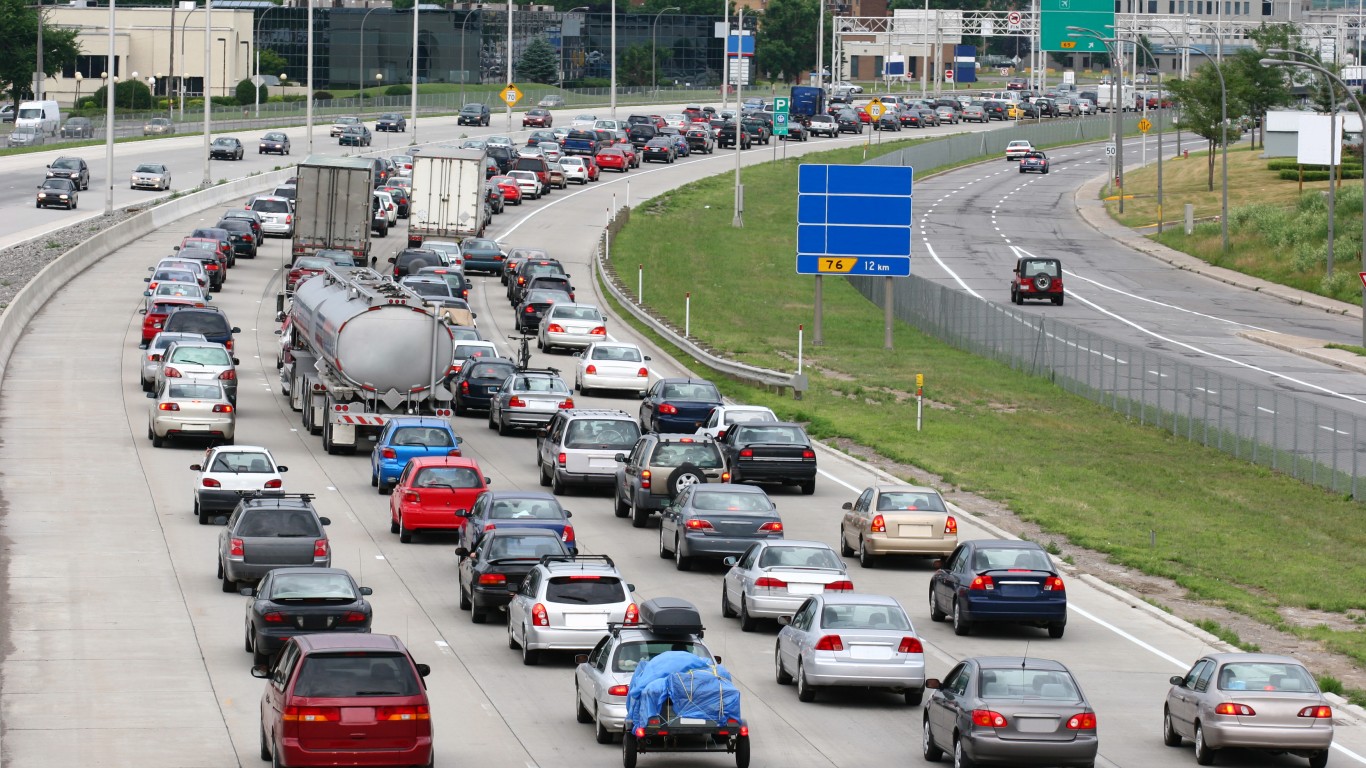
9. Canada
> GHG emissions, 2019: 638.36 million metric tons of CO2 eq
> Pct. of world GHG emissions: 1.70%
> Pct. of CO2 emissions 2020: 1.54% — #11 of 145 countries
> Population, 2020: 38.01 million
> Pct. of world population: 0.49%
Canada has joined the nations pledging zero emissions by 2050 and has codified the goal into law, but it faces serious challenges with high per capita energy use and opposition to the drastic measures needed on the part of the energy utility sector. Though Prime Minister Trudeau ran on a climate platform in 2015, environmentalists are unhappy that there is still no plan or strategy in play sufficient to meet aggressive goals.
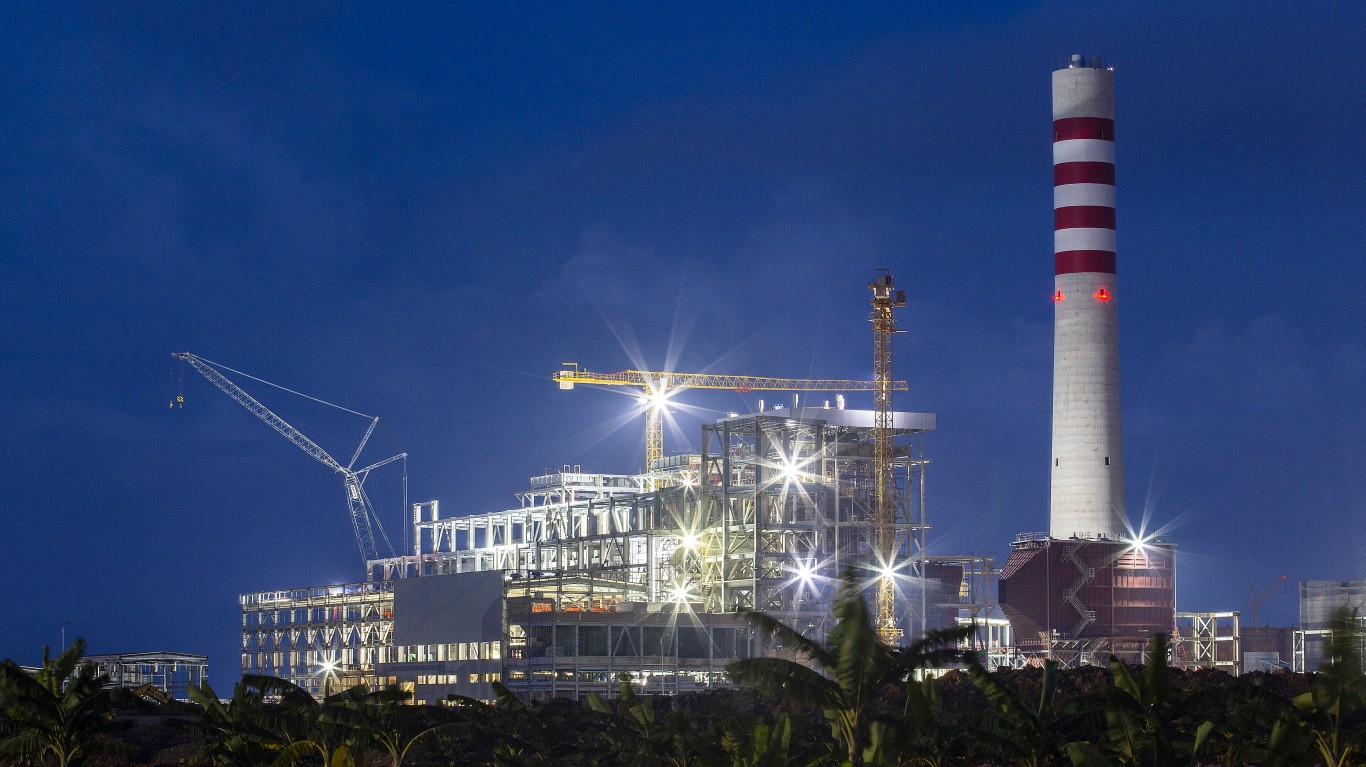
8. Indonesia
> GHG emissions, 2019: 650.03 million metric tons of CO2 eq
> Pct. of world GHG emissions: 1.73%
> Pct. of CO2 emissions 2020: 1.69% — #10 of 145 countries
> Population, 2020: 273.52 million
> Pct. of world population: 3.52%
In the months leading up to the Glasgow climate conference, Indonesia introduced two major initiatives designed to put the country on a path to achieving a 29% reduction in emissions by 2030 — and up to 41% with international financial assistance. The first is a carbon tax to be charged against entities that emit above pollution caps set for various sectors. To allow for flexibility, the tax will be augmented with a cap and trade system that will place a value on carbon and allow for market trading.
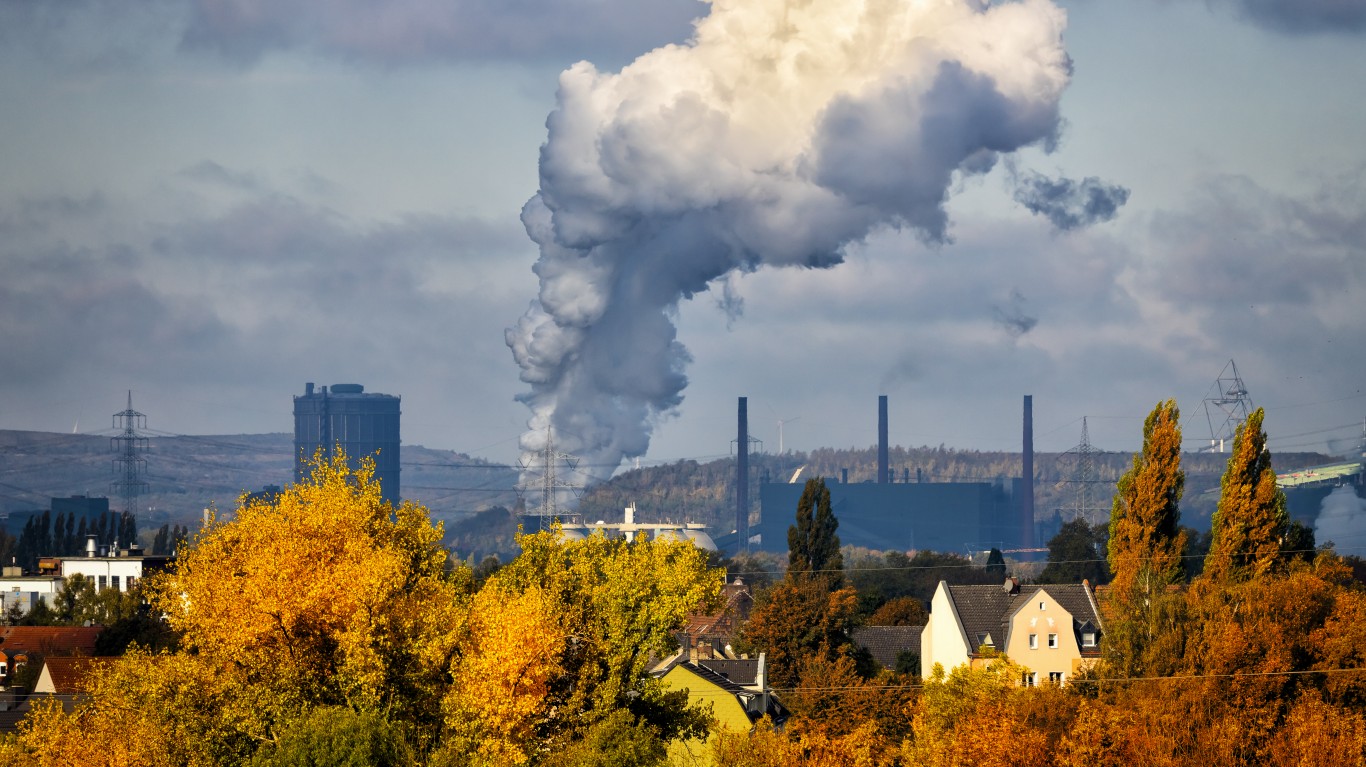
7. Germany
> GHG emissions, 2019: 658.34 million metric tons of CO2 eq
> Pct. of world GHG emissions: 1.75%
> Pct. of CO2 emissions 2020: 1.85% — #7 of 145 countries
> Population, 2020: 83.24 million
> Pct. of world population: 1.07%
Germany’s GHG emissions dropped by 8.7% in 2020 as the country struggled with lockdowns and a slowed economy. In this way, the pandemic gave Germany the distinction of overshooting by .8% its goal of reducing emissions by 40% between 1990 and 2020. This success is now being undermined by the 2021 economic rebound, projected to result in the highest annual emission rate since 1990.
[in-text-ad-2]

6. Iran
> GHG emissions, 2019: 778.10 million metric tons of CO2 eq
> Pct. of world GHG emissions: 2.07%
> Pct. of CO2 emissions 2020: 2.14% — #6 of 145 countries
> Population, 2020: 83.99 million
> Pct. of world population: 1.08%
Though it is facing some of the worst consequences of climate change, including threats to water supplies and agriculture, and, despite the fact that it depends on fossil fuels for 90% of its energy supply, Iran has shown little interest in participating in the international effort to reduce GHG emissions. To the extent it has set vague and minimal emission goals, Iran has indicated it will only make efforts to meet these goals with the lifting of international sanctions, and with financial assistance.

5. Japan
> GHG emissions, 2019: 1,071.03 million metric tons of CO2 eq
> Pct. of world GHG emissions: 2.85%
> Pct. of CO2 emissions 2020: 2.96% — #5 of 145 countries
> Population, 2020: 125.84 million
> Pct. of world population: 1.62%
Japan has decreased its carbon emissions by 14% since 1913 and, in a 2021 revision, plans to increase the reduction to 46% by 2030, replacing its previous 26% goal. Even with new carbon capture technologies and increased efficiencies, Japan’s current dependence on fossil fuels – 56% of the mix – has to change drastically if the country is to meet its 2050 zero emissions target.
[in-text-ad]
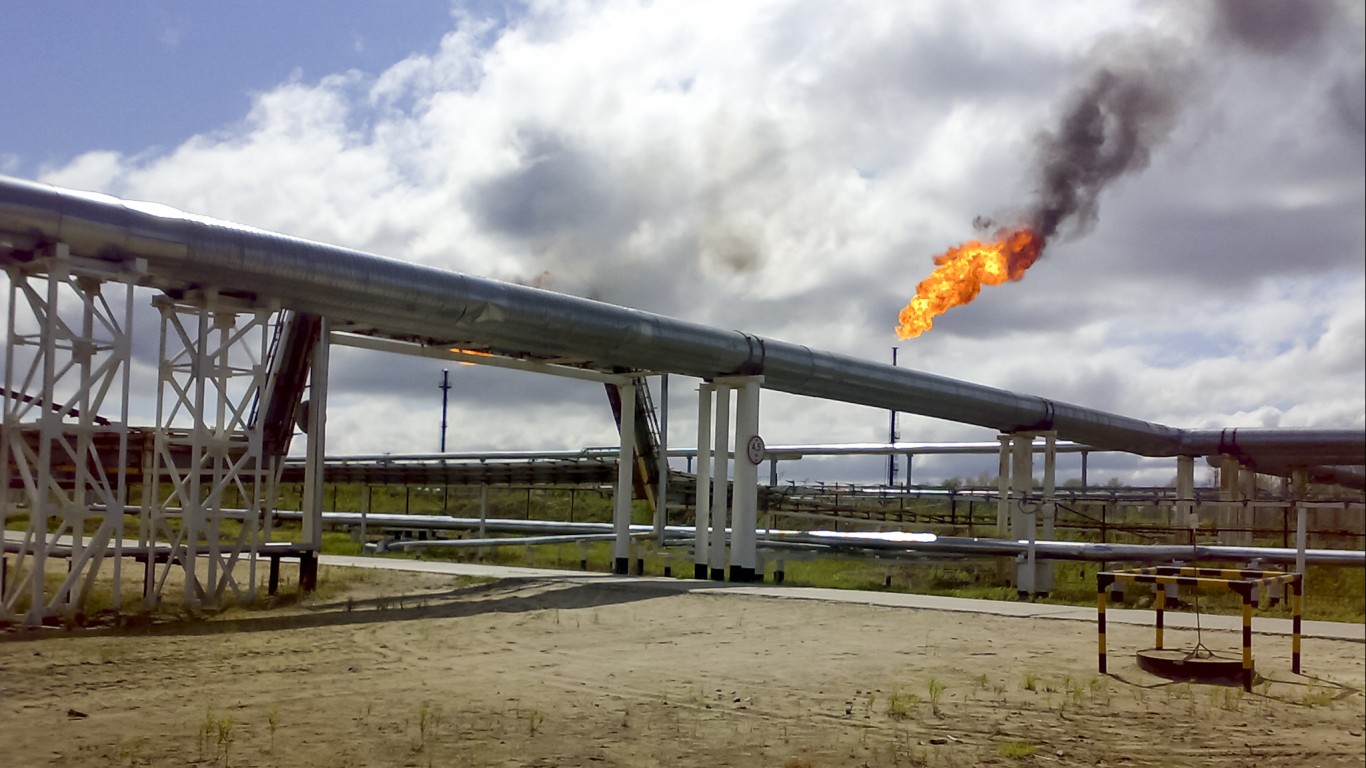
4. Russia
> GHG emissions, 2019: 2,208.77 million metric tons of CO2 eq
> Pct. of world GHG emissions: 5.87%
> Pct. of CO2 emissions 2020: 4.53% — #4 of 145 countries
> Population, 2020: 144.10 million
> Pct. of world population: 1.86%
Apparently awakened by the rapid loss of Arctic permafrost, President Putin has dropped his climate denial rhetoric and announced that Russia will strive for net zero emissions by 2060. Critics are skeptical of Putin’s planned reliance on the carbon reduction function of the country’s forests and natural systems, particularly in the face of the immense Siberian forest fires of recent years. The Russian plan also includes a transition to a greater dependence on natural gas over oil and coal. The country’s massive gas pipe infrastructure is already leaking 14 millions tons of methane a year, methane being a greenhouse gas 80 times more potent than carbon dioxide.
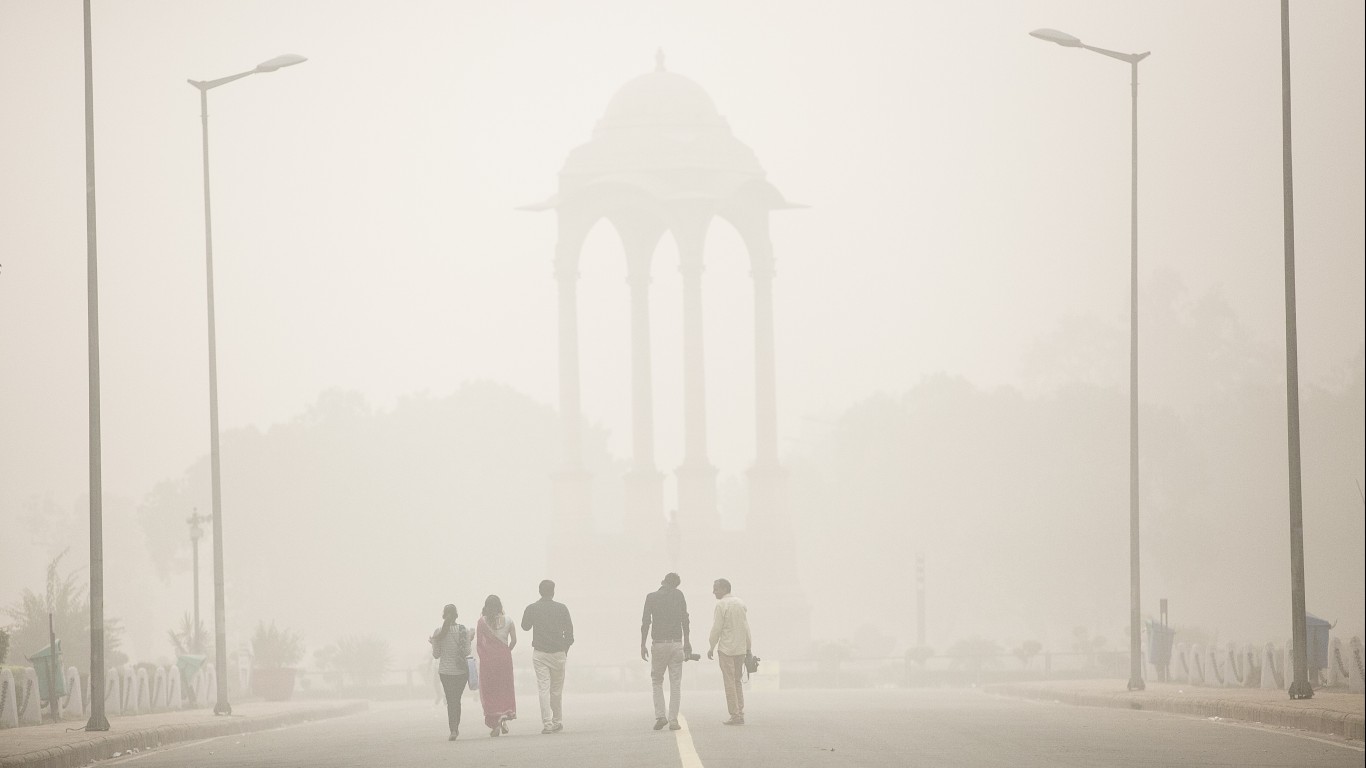
3. India
> GHG emissions, 2019: 2,422.24 million metric tons of CO2 eq
> Pct. of world GHG emissions: 6.44%
> Pct. of CO2 emissions 2020: 7.02% — #3 of 145 countries
> Population, 2020: 1,380.00 million
> Pct. of world population: 17.78%
Citing the larger contributions of GHG emissions from the prosperous nations of the world, India has resisted setting emission goals, arguing instead for “emissions intensity” targets, measuring emissions per unit of economic growth. Given its heavy dependence on oil and coal, it has also spurned a 2050 target for zero emissions, setting its own goal for 2070. Much of India’s climate plan centers around reforestation.

2. United States
> GHG emissions, 2019: 5,246.37 million metric tons of CO2 eq
> Pct. of world GHG emissions: 13.94%
> Pct. of CO2 emissions 2020: 13.54% — #2 of 145 countries
> Population, 2020: 329.48 million
> Pct. of world population: 4.24%
Determined to demonstrate that the U.S. is back in the game following former President Trump’s climate skepticism and rejection of the Paris Accord, President Biden appeared at the Glasgow conference with a message of urgency, describing climate change as an “existential crisis,” and emphasizing the need to assist poorer nations in reducing emissions. Throughout 2021 Binden has announced a number of climate initiatives and goals, relying heavily on executive powers and the EPA in the face of opposition to his Build Back Better bill. The legislation includes $500 billion in climate investments needed to meet the country’s climate goals.
[in-text-ad-2]
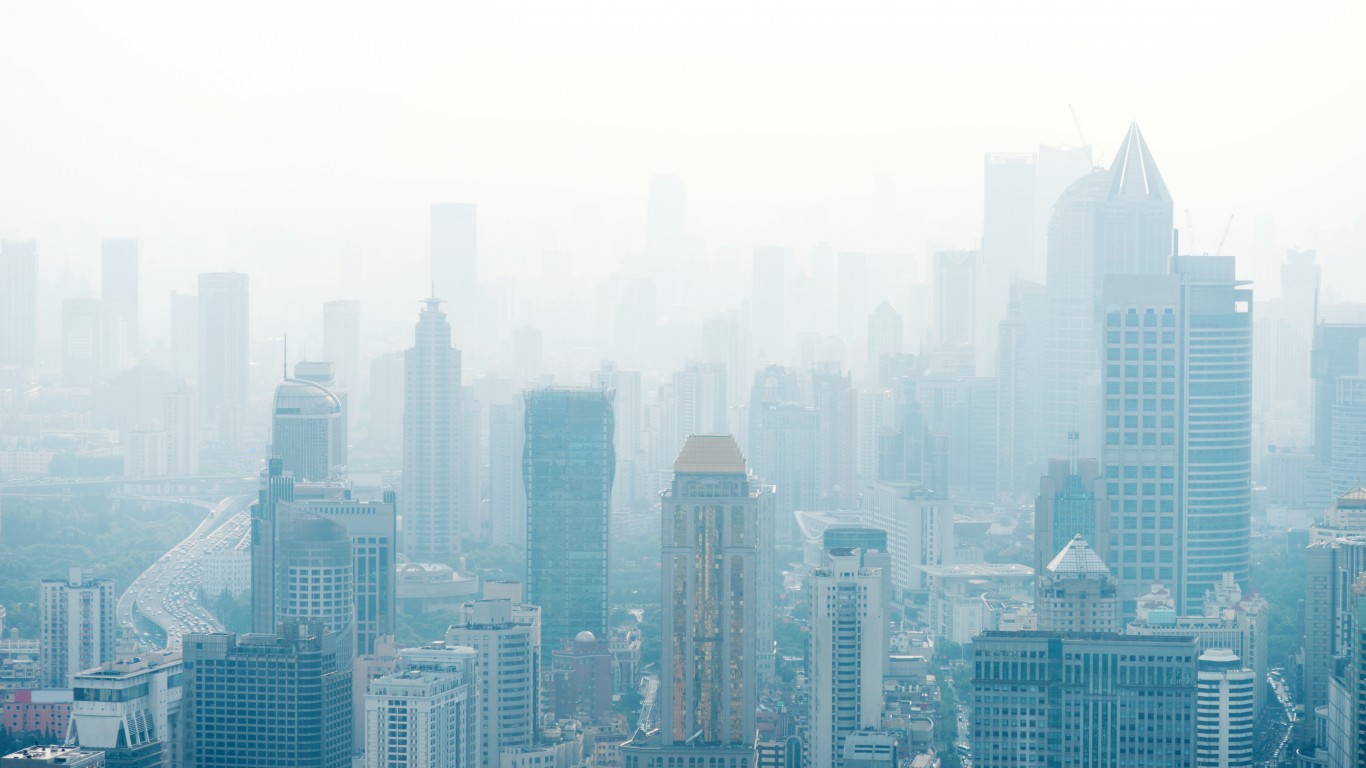
1. China
> GHG emissions, 2019: 10,618.71 million metric tons of CO2 eq
> Pct. of world GHG emissions: 28.22%
> Pct. of CO2 emissions 2020: 30.65% — #1 of 145 countries
> Population, 2020: 1,410.93 million
> Pct. of world population: 18.18%
China’s emissions continue to grow along with its population and swelling economy. President Xi Jinping has declared a commitment to zero emissions by 2060, but has promised no reductions until 2030. With its contribution to worldwide carbon output at 28.22/% and growing, its actions – or inaction – will likely determine the world’s success or failure in curbing the rate of climate change.
Get Ready To Retire (Sponsored)
Start by taking a quick retirement quiz from SmartAsset that will match you with up to 3 financial advisors that serve your area and beyond in 5 minutes, or less.
Each advisor has been vetted by SmartAsset and is held to a fiduciary standard to act in your best interests.
Here’s how it works:
1. Answer SmartAsset advisor match quiz
2. Review your pre-screened matches at your leisure. Check out the advisors’ profiles.
3. Speak with advisors at no cost to you. Have an introductory call on the phone or introduction in person and choose whom to work with in the future
Thank you for reading! Have some feedback for us?
Contact the 24/7 Wall St. editorial team.
 24/7 Wall St.
24/7 Wall St.


